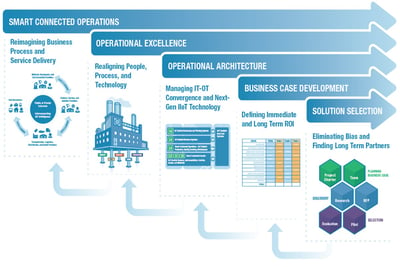 We’ve been writing a lot lately on Digital Transformation; how Enterprise Architecture (EA) provided the technological blueprint to achieve you Digital Transformation goals. What we haven’t yet spent a lot of time writing about is building the business case for Digital Transformation. Part of that stems from the fact that the business case will vary widely by industry and if we generalize too much about the business case it becomes so abstract that it ends up being of no use to anyone.
We’ve been writing a lot lately on Digital Transformation; how Enterprise Architecture (EA) provided the technological blueprint to achieve you Digital Transformation goals. What we haven’t yet spent a lot of time writing about is building the business case for Digital Transformation. Part of that stems from the fact that the business case will vary widely by industry and if we generalize too much about the business case it becomes so abstract that it ends up being of no use to anyone.
Click here to speak to Dan
Another more practical angle is that the business case is very personalized to each enterprise. The business case is dependent both on what degree of Digital Transformation a business is trying to achieve, as well as where they are starting from. This means for that an enterprise really can’t begin building the business case until they have an understanding not only of where they are today, but the digital future they envision operating in. In my last post I explained that the EA effort was they way to accomplish just that. So, to build the proper business case for Digital Transformation, you must have completed the EA activity. However, the next assertion I am going to make may challenge your thinking. You can’t actually build a business case for Digital Transformation!
Why You Can’t Build the Business Case For Digital Transformation
The reason I argue that today you can’t build a business case for transformation is that we are still in the early stages of the market cycle where there is still hype and the perceived market opportunity is yet to be fully understood. As adoption of the underlying technologies that enable Digital Transformation, Industrial Internet of Things (IIoT), Mobility, Cloud, and Big Data and analytics, finally achieve their own level of stability in the market, the combined effect will begin to surface, and we will see a period of “facing reality” where there will be numerous cases of Digital Transformation that fail. Once the trough is reached and “liftoff” occurs the real market potential is tapped. It is the companies that invest through the trough that accrue the most benefits. Salesforce.com actually was started when the Application Service Provider (ASP) or Software as a Service (SaaS) market was said to be at the trough. Amazon was created when the Internet was deemed to be in a trough, the same time Roelof Botha invested in YouTube. The simple fact is we are still experimenting with Digital Transformation, and the Business Case for Digital Transformation itself can’t be readily made. The good news is that no one is actually demanding a business case for the entire Digital Transformation effort. Instead we are being asked to generate business cases for tactical elements that allow an enterprise to support their strategic Digital Transformation vision.
You Can Build a Business Case for the Underlying Business Process Elements of Operational Excellence
So, if you can’t build a business case for your entire Digital Transformation initiative what can you do? If you’ve followed the LNS Research Digital Transformation framework model, you have tied your Digital Transformation initiative to Operational Excellence and you have already extended your Enterprise Architecture to the manufacturing or service delivery aspects of your business. Since you understand the systems in place and those needed to accomplish your Operational Excellence goals, you can do a pillar-by-pillar business case for each area needing investment i.e. Asset Performance Management (APM), Environmental, Health, and Safety (EHS), Enterprise Quality Management Software (EQMS), IEM, Manufacturing Operations Management (MOM) and New Product Development & Introduction (NPDI), Product Life Management (PLM) and Supply Chain Management (SCM) as appropriate. In many respects this also plays to the old question of “How do you eat an elephant – one bite at a time.”
By breaking the Digital Transformation effort into Operational Excellence focused business process improvement initiatives (BPIs) you can typically build sound business cases with measurable results. If you have a solid vision of what your business should look like in 5, 10, or even 20 years out by linking back to Operational Excellence and adhere to the results of an EA effort, you are well positioned to actually accomplish your Digital Transformation.
Access the Metrics That Really Matter webinar On-Demand where Andrew Hughes presents the results from the fourth iteration of the Metrics that Matter research study conducted between LNS Research and MESA International, and places particular focus on how the deployment of IIoT, Cloud, and Analytics are transforming manufacturing today.